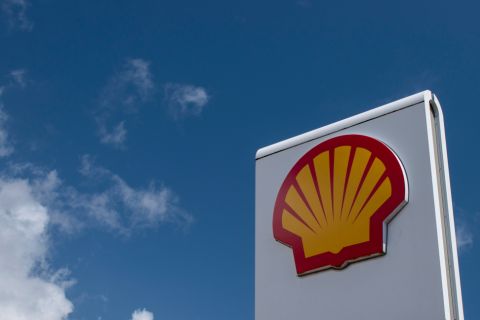Pembina Field, some 60 miles southwest of Edmonton, Alberta, has a long history of oil production from the Cardium formation. Now, the area is grabbing headlines as players drill a flurry of wells to tap a prolific patch-reef trend that runs through the field. In a recent report, FirstEnergy Capital Corp., Calgary, noted that gas wells drilled along the Nisku patch-reef trend can flow at rates of more than 25 million cubic feet per day, and oil wells are capable of making 2,500 barrels per day. Individual reefs can contain original in-place reserves of up to 12 million barrels of oil and 13 billion cubic feet (Bcf) of gas. To date, more than 20 separate pools have been found. Active operators in the booming play include Dominion Resources, Fairborne Energy Ltd., Highpine Oil & Gas Ltd., Kick Energy Corp., Lightning Energy Ltd., Vaquero Energy Ltd. and West Energy Ltd. Of course, Nisku reefs have been well-known objectives for decades. At Pembina, two pinnacle-reef belts run roughly parallel to the Nisku carbonate-bank edge that hosts the patch-reef trend. The oil-prone basinward belt of pinnacles was heavily drilled in the late 1970s and 1980s by major operators. The second, up-dip pinnacle-reef trend proved to be tight, however. Now, the focus of attention is in the patch-reef play, which lies yet farther up-dip. The huge Brazeau Nisku P pool was found in this trend in 1977 by Dome Petroleum. That discovery has produced more than 415 Bcf of gas, and is still onstream. While the Nisku carbonate-bank area stirred considerable activity after Dome's discovery, a succession of dry holes and disappointing wells in its vicinity cooled interest in the Nisku patch reefs for decades. The play began to attract notice again in 2000, when an independent drilled a well up-dip of the P pool that came in for 6 million cubic feet of gas per day. In 2001, after another independent drilled a 1,900-barrel-per-day oil well at a location up-dip to the gas find, people began to take the revived Nisku play seriously. The up-dip oil is one of the most unusual features of the sizzling play. According to FirstEnergy analyst Cody Kwong, industry thinking is that oil migrated into the individual patch reefs, which can achieve reliefs of up to 30 meters and cover areas as large as seven square kilometers, and filled each reef to its spill point. That phase was followed by gas migration, which pushed the oil farther out of the basin and caused today's inversion of the usual fluid relationships. The patch-reef trend now spans an area some 20 kilometers wide by 100 kilometers long, in townships 45-52 and ranges 6-13W5. Dolomitization of the reefal limestones has produced astonishing reservoir characteristics: primary and secondary porosities range from 10% to 15%, and permeabilities can be above a darcy. The reefs, which are found at depths of 2,000 to 3,000 meters, have an active water drive and correspondingly high recovery rates. Naturally, there are some challenges in the play. The natural gas is sour, with H2S contents ranging from 15% to 30% of total gas volumes. Operators must devote considerable attention and time to satisfying the safety requirements of the government agencies and obtaining the approval of local residents, and licensing can take anywhere from three months to a year or more, said Kwong. Even with 3-D seismic, the drilling risk hovers around 50% in the play. Although the presence of porosity can be inferred from amplitude anomalies, one of the key risks is the fluid content of each reef. It's very difficult to distinguish an oil-filled reef from one filled with water, and although the reefs in the trend are pressure-connected, each pool has a distinct oil/gas/water contact due to the complex migration history. Additionally, the Alberta Energy & Utilities Board sets the allowable rates for oil production, and it can severely restrict volumes until it has collected all the relevant reservoir data. The processing infrastructure in the Pembina region is also strained by the current volumes and capacity is hard to come by. Water-handling costs are another concern. Finally, land prices have shot dramatically skyward. For all that, it's a remarkable play and many highly prospective locations are slated for drilling this year.
Recommended Reading
Shell’s CEO Sawan Says Confidence in US LNG is Slipping
2024-02-05 - Issues related to Venture Global LNG’s contract commitments and U.S. President Joe Biden’s recent decision to pause approvals of new U.S. liquefaction plants have raised questions about the reliability of the American LNG sector, according to Shell CEO Wael Sawan.
Some Payne, But Mostly Gain for H&P in Q4 2023
2024-01-31 - Helmerich & Payne’s revenue grew internationally and in North America but declined in the Gulf of Mexico compared to the previous quarter.
Green Swan Seeks US Financing for Global Decarbonization Projects
2024-02-21 - Green Swan, an investment platform seeking to provide capital to countries signed on to the Paris Agreement, is courting U.S. investors to fund decarbonization projects in countries including Iran and Venezuela, its executives told Hart Energy.
BP Pursues ‘25-by-‘25’ Target to Amp Up LNG Production
2024-02-15 - BP wants to boost its LNG portfolio to 25 mtpa by 2025 under a plan dubbed “25-by-25,” upping its portfolio by 9% compared to 2023, CEO Murray Auchincloss said during the company’s webcast with analysts.
Sunoco’s $7B Acquisition of NuStar Evades Further FTC Scrutiny
2024-04-09 - The waiting period under the Hart-Scott-Rodino Antitrust Improvements Act for Sunoco’s pending acquisition of NuStar Energy has expired, bringing the deal one step closer to completion.





